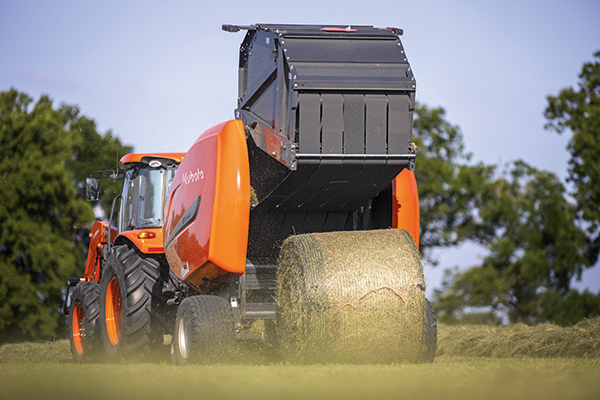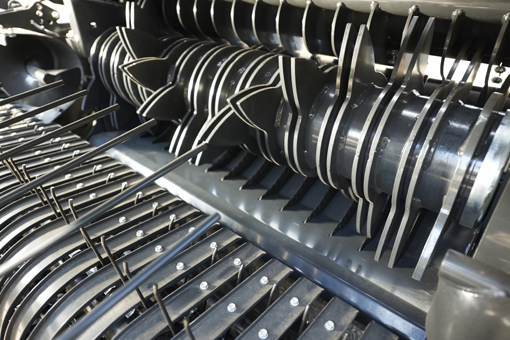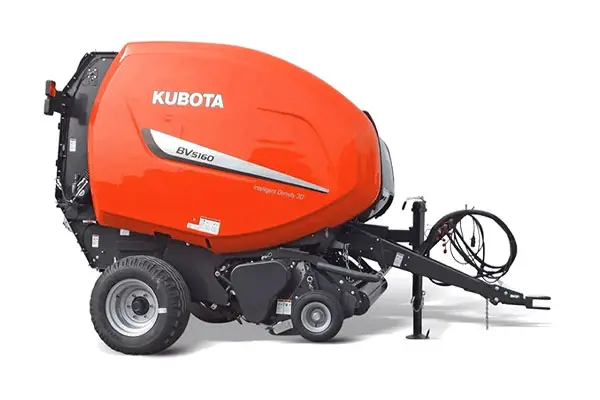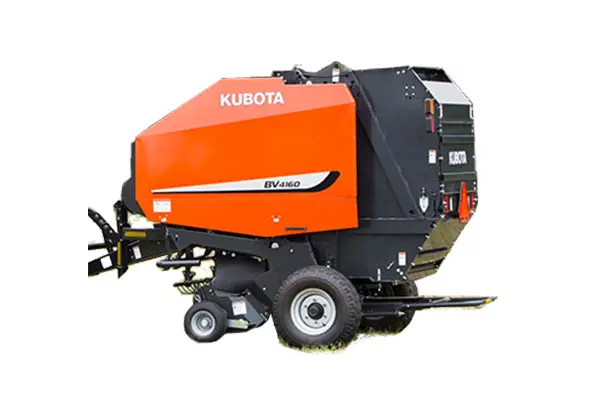Kubota BV4160 Round Baler Walk Around and Review
Tags : bv4160 | bv5160 | haybaler | haytools | kubota |Quick Summary
- Kubota round balers like the BV4160 and BV5160 trace their heritage to Kverneland and Vicon designs, offering proven durability and performance.
- The BV4160 Silage Special is built heavy from the ground up — no retrofit kits needed for silage work.
- Standard premium features include a wide 79" pickup, hydraulic lift, and integrated electronics for easy operation.
- The balers use advanced density control and net wrap systems for consistent, high-quality bales.
- Kubota’s hay tools lineup combines European engineering with features tailored for North American operators.
Kubota’s Hay Tool Heritage
If you’ve been around Kubota hay tools, you know the lineup has strong roots in European engineering. Kubota acquired the Kverneland Group in 2012 — a company known in the U.S. under the Vicon name. Many of Kubota’s tedders, mowers, and rakes share that DNA. But when it comes to the balers, Kubota went beyond the legacy designs to create machines purpose-built for both dry hay and silage applications.

The Kubota BV4160 Round Baler
The Kubota BV4160 is a 4x5 round baler that can actually handle up to a 5-foot-5-inch bale. It’s built from the ground up for silage — not just a dry hay baler with a few reinforcements added. The Silage Special model includes heavy-duty components, thicker steel, and a driven scraper system to keep material from wrapping around the rollers. You get a baler that’s rugged, consistent, and ready for high-moisture forage.
Designed for Versatility
When Kubota brought these balers to the U.S. market in 2015, they made only minor changes from the European version. That’s because the original design already met demanding conditions worldwide. It’s a machine that can easily adapt to various crops and moisture levels, offering long-term reliability for both dairy and beef producers.

Pickup and Feeding System
The working heart of any baler is its pickup. Kubota includes a wide 79-inch pickup with four tine bars, standard hydraulic lift, and a simple pin-adjusted gauge wheel system. These features come standard — not optional upgrades — making Kubota’s balers extremely competitive when comparing specs across colors.
The pickup’s low-profile design and faster spinning tines help it take smaller bites and feed the crop more evenly. This design leads to faster bale starts and smoother feeding, giving operators more consistent bale shapes and densities.
Heavy Build and Simplified Maintenance
Though the BV4160 looks complex at first glance, it’s actually straightforward to service. Large shields open wide, giving easy access to chains, sprockets, and drive components. The baler uses heavy #80H chain and features a centralized electronics box right on the baler. That means if you move it between tractors, all settings and data travel with the machine — no need to reprogram monitors.
Smart Electronics and Sensors
Kubota integrates multiple potentiometers to monitor bale growth, tailgate position, and net wrap feed. These sensors are interchangeable and designed for reliability, helping ensure perfect bale formation from side to side. The system is easy to troubleshoot, which is something our technicians here at Messick’s really appreciate.
Silage Special Features
So what separates a Silage Special from a standard BV4160 Premium? Primarily, it’s the driven scraper shafts that prevent buildup, plus the proportional valve system that gives operators control over bale density from the cab. You can adjust core softness, mid-layer firmness, and outer density on the fly — critical when switching between crops or changing field conditions.
Net Wrap System
Kubota’s net wrap system is both durable and operator-friendly. Two spare rolls are stored conveniently on the baler. Loading is simple — press a button in the cab to lift the brake bar, slide in the new roll, and you’re ready to go. The full-length steel net brake bar applies even pressure across the roll, helping ensure consistent wrapping and long service life.
Bale Construction and Belts
The BV4160 uses a floor roller and five wide belts to spin the bale. These belts use high-quality German mat lacing for strength and durability. The larger BV5160 cutter baler takes it a step further with endless belts for even longer life in high-production environments.
Built for Operators Who Expect More
Every detail of Kubota’s baler lineup — from the hydraulic lift pickup to the proportional density control — is built to match or exceed competitors’ premium models. If you’re considering upgrading your baler or switching brands, the Kubota round baler lineup offers a combination of strength, simplicity, and advanced technology that’s hard to beat.
As always, if we can help you find the right baler for your operation, give us a call here at Messick’s or visit us online at messicks.com.
Frequently Asked Questions
What makes the Kubota BV4160 a “Silage Special” baler?
The BV4160 Silage Special is built heavier from the ground up and includes driven scraper shafts to keep material from wrapping, along with a proportional valve system for adjustable bale density control right from the cab.
What’s the difference between the BV4160 and BV5160 balers?
Both balers share the same core design, but the BV5160 offers a larger capacity and an endless belt system on its cutter model for higher productivity and durability in demanding operations.












